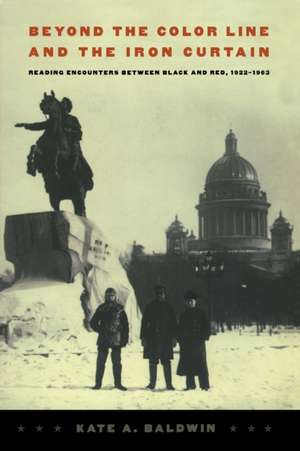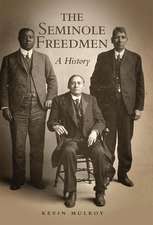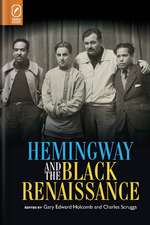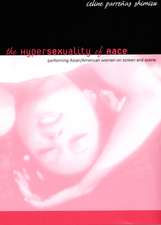Beyond the Color Line and the Iron Curtain – Reading Encounters between Black and Red, 1922–1963: New Americanists
Autor Kate A. Baldwinen Limba Engleză Paperback – 16 oct 2002
Langston Hughes, W. E. B. Du Bois, Claude McKay, and Paul Robeson each lived or traveled extensively in the Soviet Union between the 1920s and the 1960s, and each reflected on Communism and Soviet life in works that have been largely unavailable, overlooked, or understudied. Kate A. Baldwin takes up these writings, as well as considerable material from Soviet sources--including articles in "Pravda" and "Ogonek," political cartoons, Russian translations of unpublished manuscripts now lost, and mistranslations of major texts--to consider how these writers influenced and were influenced by both Soviet and American culture. Her work demonstrates how the construction of a new Soviet citizen attracted African Americans to the Soviet Union, where they could explore a national identity putatively free of class, gender, and racial biases. While Hughes and McKay later renounced their affiliations with the Soviet Union, Baldwin shows how, in different ways, both Hughes and McKay, as well as Du Bois and Robeson, used their encounters with the U. S. S. R. and Soviet models to rethink the exclusionary practices of citizenship and national belonging in the United States, and to move toward an internationalism that was a dynamic mix of antiracism, anticolonialism, social democracy, and international socialism.
Recovering what Baldwin terms the "Soviet archive of Black America," this book forces a rereading of some of the most important African American writers and of the transnational circuits of black modernism.
Din seria New Americanists
-
 Preț: 265.41 lei
Preț: 265.41 lei -
 Preț: 240.90 lei
Preț: 240.90 lei -
 Preț: 231.99 lei
Preț: 231.99 lei -
 Preț: 265.02 lei
Preț: 265.02 lei -
 Preț: 264.05 lei
Preț: 264.05 lei -
 Preț: 337.24 lei
Preț: 337.24 lei -
 Preț: 262.32 lei
Preț: 262.32 lei -
 Preț: 268.31 lei
Preț: 268.31 lei -
 Preț: 310.83 lei
Preț: 310.83 lei -
 Preț: 260.19 lei
Preț: 260.19 lei -
 Preț: 263.47 lei
Preț: 263.47 lei -
 Preț: 206.44 lei
Preț: 206.44 lei -
 Preț: 262.91 lei
Preț: 262.91 lei -
 Preț: 260.96 lei
Preț: 260.96 lei -
 Preț: 305.83 lei
Preț: 305.83 lei -
 Preț: 236.66 lei
Preț: 236.66 lei -
 Preț: 231.12 lei
Preț: 231.12 lei -
 Preț: 301.59 lei
Preț: 301.59 lei -
 Preț: 302.96 lei
Preț: 302.96 lei -
 Preț: 263.47 lei
Preț: 263.47 lei -
 Preț: 311.01 lei
Preț: 311.01 lei -
 Preț: 303.88 lei
Preț: 303.88 lei -
 Preț: 303.88 lei
Preț: 303.88 lei -
 Preț: 309.49 lei
Preț: 309.49 lei -
 Preț: 268.68 lei
Preț: 268.68 lei -
 Preț: 231.00 lei
Preț: 231.00 lei -
 Preț: 231.12 lei
Preț: 231.12 lei -
 Preț: 262.32 lei
Preț: 262.32 lei -
 Preț: 232.14 lei
Preț: 232.14 lei -
 Preț: 263.47 lei
Preț: 263.47 lei -
 Preț: 303.72 lei
Preț: 303.72 lei -
 Preț: 239.54 lei
Preț: 239.54 lei -
 Preț: 315.08 lei
Preț: 315.08 lei -
 Preț: 304.86 lei
Preț: 304.86 lei -
 Preț: 242.06 lei
Preț: 242.06 lei -
 Preț: 300.62 lei
Preț: 300.62 lei -
 Preț: 308.33 lei
Preț: 308.33 lei -
 Preț: 301.59 lei
Preț: 301.59 lei -
 Preț: 305.83 lei
Preț: 305.83 lei -
 Preț: 241.29 lei
Preț: 241.29 lei -
 Preț: 266.18 lei
Preț: 266.18 lei -
 Preț: 266.77 lei
Preț: 266.77 lei -
 Preț: 266.18 lei
Preț: 266.18 lei -
 Preț: 262.32 lei
Preț: 262.32 lei -
 Preț: 394.23 lei
Preț: 394.23 lei -
 Preț: 238.39 lei
Preț: 238.39 lei -
 Preț: 264.64 lei
Preț: 264.64 lei -
 Preț: 236.13 lei
Preț: 236.13 lei
Preț: 302.36 lei
Nou
Puncte Express: 454
Preț estimativ în valută:
57.86€ • 60.57$ • 47.87£
57.86€ • 60.57$ • 47.87£
Carte tipărită la comandă
Livrare economică 05-19 aprilie
Preluare comenzi: 021 569.72.76
Specificații
ISBN-13: 9780822329909
ISBN-10: 0822329905
Pagini: 360
Ilustrații: 19 b&w photographs
Dimensiuni: 168 x 227 x 24 mm
Greutate: 0.53 kg
Ediția:New.
Editura: MD – Duke University Press
Seria New Americanists
ISBN-10: 0822329905
Pagini: 360
Ilustrații: 19 b&w photographs
Dimensiuni: 168 x 227 x 24 mm
Greutate: 0.53 kg
Ediția:New.
Editura: MD – Duke University Press
Seria New Americanists
Cuprins
Acknowledgements Introduction: The Demand for a New Kind of Person: Black Americans and the Soviet Union, 1922-1963 "Not at All God's White People": McKay and the Negro in Red Between Harem and Harlem: Hughes and the Ways of the Veil Du Bois, Russia, and the "Refusal to Be White" Black Shadows Across the Iron Curtain: Robeson's Stance Between Cold War Cultures Epilogue: The Only Television Who Doesn't Turn Red Notes; Selected Bibliography; Index
Recenzii
Kate Baldwins Beyond the Color Line and the Iron Curtain adds an invaluable new dimension to scholarship on African American artists and the Left, complicating notions of black internationalism beyond Paul Gilroys influential diasporic blood and culture model of the Black Atlantic. . . . One of the great strengths of this study is Baldwins groundbreaking research, drawing on recently opened Soviet archives. . . . She has also raised the bar for the quality and depth of research and research skills for students of the international dimensions of American Communism with respect to U.S. culture and politics.James Smethurst, Comparative LiteratureBeyond the Color Line and the Iron Curtain takes an impressive step toward establishing a new concept of the black transatlantic traditionone that foregrounds the key role the Soviet Union played in the formation of black internationalism.Ryan Schneider, Modern Fiction Studies[T]he book's historical depth, border-crossing scope, analytic reach, and exposure of little-known but globally important texts make this a front-shelf selection. In its closing pages, the book's epilogue is terrifically smart and dazzlingly readable: should that style carry into Baldwin's future work she will be a force indeed.David Chioni Moore, Research in African Literatures[A] rewarding book that makes a major contribution to analyses of African-American political thinking between the 1920s and 1960s.Sage Race Relations Abstracts[A] provocative account of cultures in contact, a work opening new avenues of investigation that promises to expand working assumptions about the geography of the black Atlantic.Keith Griffler, American Historical ReviewBy retrieving and rethinking 'routes of influence between Moscow, Tashkent, and Harlem,' Baldwin's volume will certainly have great significance for the future cross-cultural research of both the 'color line' and the East/West divide.Vladimir Prozorov, American Studies InternationalThe fresh comparative analysis of this final chapter is a characteristic strength of Baldwin's book throughout-she may well be the first serious critic of African American literary radicalism whose own Russian skills and travels have allowed her access to recently unsealed Soviet archives. . . . Baldwin's original and penetrating book is vital reading for Russianists interested in the far-flung appeal of Soviet internationalism, and for African Americanists seeking to map black transnationalisms outside the boundaries of Paul Gilroy's reigning Black Atlantic paradigm.William J. Maxwell, Slavic ReviewKate A. Baldwin's linguistic mastery and direct use of Russian archives-including those of the Soviet state-afford Beyond the Color Line and the Iron Curtain intriguing comparisons between African American views of the Soviet Union and those of other literal and political 'fellow travelers' in search of Communism's revolutionary promise.Judy Kutulas, Journal of American HistoryThis provocative and highly original book breaks new ground in African American studies. The topic provides a treasure trove for the scholar seeking to glean important insights from African American and Russian test. . . . Part of [Baldwin's] accomplishment is to have established such a link and successfully explored it. . . . Baldwin revives the cultural logic of a lost world and provides a new way for contemporaries to think about democracy, race, and citizenship.Brenda Gayle Plummer, Journal of African American HistoryIn this important book, Baldwin's tenacious research provides readers with the means to reconstruct the neglected and, at times, deliberately suppressed story of the interaction between prominent black American visitors and the Soviet experiment in constructing a cross-racial model of international socialism. . . . [I]nnovative.Dale E. Peterson, Slavic and East European JournalAbstract in American Literature. Listed in Yale Alumni Magazine and boundary 2.
Notă biografică
Kate A. Baldwin is Assistant Professor of English at the University of Notre Dame.
Textul de pe ultima copertă
"In "Beyond the Color Line and the Iron Curtain," Kate A. Baldwin has presented the hitherto ignored Soviet response to African American intellectuals and cultural workers. This is an invaluable resource for anyone who wants to understand the intellectual and political range of African America in the twentieth century."--Gayatri Chakravorty Spivak, author of "A Critique of Postcolonial Reason: Toward a History of the Vanishing Present "
Descriere
Re-examines the relations between African Americans and the Soviet Union from a more transnational perspective and shows how these relations were crucial in the formation of Black modernism.




















